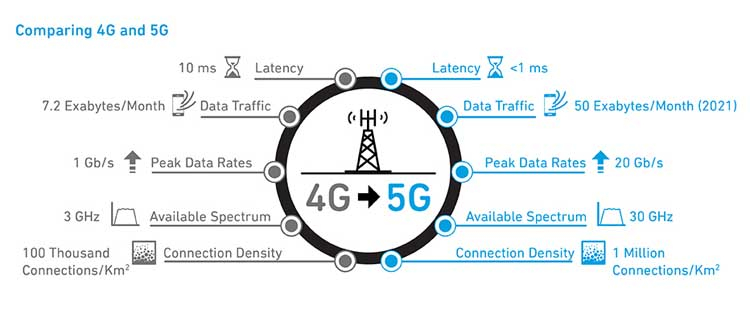




Network Standards in previous Generations of Mobile Networks:First generation - 1G 1980s: 1G delivered analog voice. Second generation - 2G Early 1990s: 2G introduced digital voice (e.g. CDMA- Code Division Multiple Access). Third generation - 3G Early 2000s: 3G brought mobile data (e.g. CDMA2000). Fourth generation - 4G LTE 2010s: 4G LTE ushered in the era of mobile broadband. 1G, 2G, 3G, and 4G all led to 5G, which is designed to provide more connectivity than was ever available before. |

Note: Network Standards LTE (4G), GSM (3G & 2G), CDMA (3G & 2G), 5G and ISM: The fundamental differences between these four modern technologies are the way they transmit and receive information.

Digital vs Analog1G used Analog signals. The next Generations started using Digital signals. So, let us firstly understand the differences between the two. Both Digital and Analog recordings transform sound signals into electrical signal. While performing that, analog use different method to replicate the original sound waves than digital. The major difference between both signals is that the analog signals have continuous electrical signals, while digital signals have non-continuous electrical signals. An analog signal is a continuous wave form that changes smoothly over time. A digital signal is discrete. It can have only a limited number of defined values, often as simple as 1 and 0. |
GSM (2G)
CDMA (3G)

LTE (4G)
|
Latency is a measure of delay. In a network, latency measures the time it takes for some data to get to its destination across the network. It is usually measured as a round trip delay - the time taken for information to get to its destination and back again. |
Network Slicing
MIMO (5G)
Technology underlying 5G




© 2024 iasgyan. All right reserved